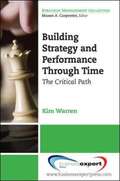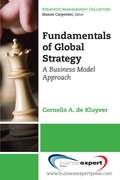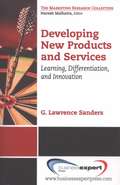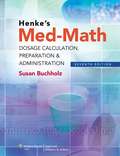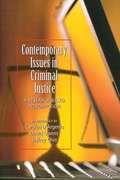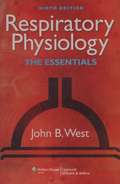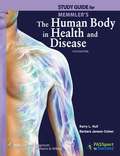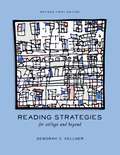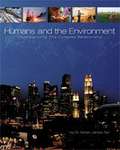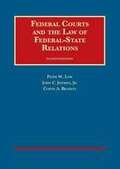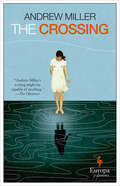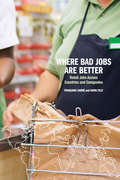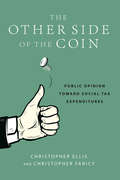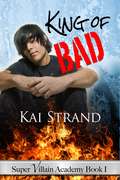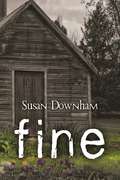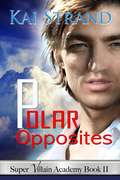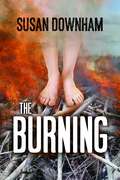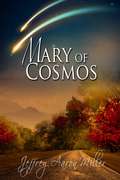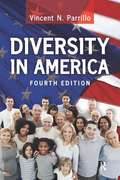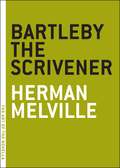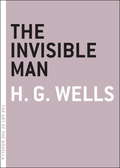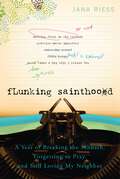- Table View
- List View
Building Strategy and Performance
by Kim WarrenThe fundamental challenge facing business leaders is to drive performance into the future--the dynamics of strategy. To tackle this effectively, they need a clear understanding of what causes performance to improve or deteriorate and what power they have to change this trajectory for the better. Without this understanding, they risk making poor choices about their future--failing to exploit promising opportunities, pursuing unachievable aims, or falling victim to competitive and other threats. Building Strategy and Performance Through Time sets the agenda for building business strategy in powerful, actionable, and accessible terms. It gives executives clear frameworks for answering three fundamental questions: * Why is our business performance following its current path? * Where is it going if we carry on as we are? * How can we design a robust strategy to transform this future? The existing strategy tools most widely used help guide management's choices about where to compete--which customers to serve, with what products and services, and how to deliver those products and services to those customers effectively and profitably. While this choice is important, it is not often changed in any fundamental way; having found a reasonably strong and profitable position on these issues, few firms will, or should, set off in a new direction. But there is still much to be done to deliver that strategy, powerfully and sustainably over time. Many decisions need to be made, continually and holistically, across all functions of the business and adapted as conditions change from month to month and year to year. Pricing, product development, marketing, hiring, service levels, and other decisions cannot be made in isolation but must take into account other choices being made, elsewhere and at different times. Building Strategy and Performance Through Time explains a reliable, practical method, known as strategy dynamics, that creates a living picture of how an enterprise actually works and delivers performance. This picture shows exactly where the levers are that management controls and how to choose what to do, when, and how much, to accomplish your specific goals. It shows, too, how the same approach can be used to defeat competitors, cope with other outside forces, and keep delivering performance.
Fundamentals of Global Strategy
by Cornelis A. de KluyverThis book looks at the opportunities and risks associated with staking out a global competitive presence and introduces the fundamentals of global strategic thinking. We define crafting a global strategy in terms of change: how a company should change and adapt its core (domestic) business model to achieve a competitive advantage as it expands globally. The conceptual framework behind this definition has three fundamental building blocks: a company's core business model, the various strategic decisions a company needs to make as it globalizes its operations, and a range of globalization strategies for creating a global competitive advantage. A business model is defined in terms of four principal components: (a) market participation--who its customers are, how it reaches them and relates to them; (b) the value proposition--what a company offers its customers; (c) the supply chain infrastructure--with what resources, activities and partners it creates its offerings; and finally, (d) its management model--how it organizes and coordinates its operations. Globalization requires a company to make strategic decisions about each component of the business model. Market participation decisions include choosing which specific markets or segments to serve, domestically or abroad; what methods of distribution to use to reach target customers; and how to promote and advertise the value proposition. Globalization decisions about the value proposition touch the full range of tangible and intangible benefits a company provides to its customers (stakeholders). Decisions about a company's value chain infrastructure deal with such questions as, What key internal resources and capabilities has the company created to support the chosen value proposition and target markets? What partner network has it assembled to support the business model? How are these activities organized into an overall, coherent value creation and delivery model? Finally, strategic decisions about the global management dimension are concerned with a company's choices about a suitable global organizational structure and decision-making process. We use Pankaj Ghemawat's well-known "AAA Triangle" framework to define three generic approaches to global value creation. Adaptation strategies seek to increase revenues and market share by tailoring one or more components of a company's business model to suit local requirements or preferences. Aggregation strategies focus on achieving economies of scale or scope by creating regional or global efficiencies; they typically involve standardizing a significant portion of the value proposition and grouping together development and production processes. Arbitrage is about exploiting economic or other differences between national or regional markets, usually by locating separate parts of the supply chain in different places.
Developing New Products and Services
by G. Lawrence SandersThe focus of the book is on the up-front activities and ideas for new product and service development. A central theme of this book is that there is, or should be, a constant struggle going on in every organization, business, and system between delivering feature-rich versions of products and services using extravagant engineering and delivering low-cost versions of products and services using frugal engineering. Delivering innovative products is accomplished by an endless cycle of business planning, creative and innovative insight, and learning-about and learning-by-doing activities. A number of powerful concepts and tools are presented in the book to facilitate new product development. For example, three templates are presented that facilitate new product and service development. The FAD (features, attributes, and design) template is used to identify the features and attributes that can be used for product and service differentiation. The Ten-Ten planning process contains two templates: an Organizational and Industry Analysis template and the Business Plan Overview template. These two templates coupled with the FAD template can be used to develop a full-blown business plan. Entrepreneurship, technology and product life cycles, product and service versioning, product line optimization, creativity, lock-in real options, business valuation, and project management topics are also covered.
Sound Speech: Public Speaking & Communication Studies
by Terri L. KoontzThis one-semester course includes discussions of the communication process, audience analysis, and public speaking guidelines. Speaking projects include introduction, interview, demonstration, declamation, informational, devotional, and persuasive speeches.
Henke's Med-Math: Dosage Calculation, Preparation and Administration (Seventh Edition)
by Susan BuchholzThis best-selling text features a highly visual, hands-on approach to learning dosage calculations and principles of drug administration. It presents step-by-step approaches to solving problems and includes dosage problems that simulate actual clinical experience. Each chapter includes numerous examples, self-tests, and proficiency tests.
Contemporary Issues in Criminal Justice
by Carolyn D'Argenio David Owens Jeffrey C. ChinIn this textbook designed to introduce research to lower division criminal justice and criminology students, editor D'Argenio (criminal justice, Mohawk Valley Community College) presents many cases on topics of interest to students, such as sexting, risky sexual behavior, and nonsocial reinforcement on Facebook. The text encourages students to think critically about crime theory and policy development and can be used as a companion text. Most chapters are conference papers; by design, there is no material drawn from news reports. Section 1 describes the role of the police research consultant and offers a beginner's guide to reading research articles. The rest of the book presents case studies and reviews of the literature in sections on researching criminological theory, researching policing issues, researching legal issues in the criminal justice system, and researching corrections issues. Learning features include chapter discussion questions and a glossary. Instructor's guide on CD including test bank - available upon adoption. Annotation ©2012 Book News, Inc. , Portland, OR (booknews. com)
Respiratory Physiology: The Essentials 9th Edition
by John B. WestWidely considered the gold standard for the teaching and learning of respiratory physiology, this fully updated Ninth Edition includes key points for each chapter and multiple-choice review questions and answers with full explanations.
Memmler's The Human Body in Health and Disease (12th Edition)
by Barbara Janson Cohen Kerry L. Hull Jason James TaylorMemmler's The Human Body in Health and Disease is a textbook for introductory-level health professions and nursing students who need a basic understanding of anatomy and physiology, the interrelationships between structure and function, and the effects of disease on body systems.
Study Guide for Memmler's The Human Body in Health and Disease
by Barbara Janson Cohen Kerry L. HullThe Study Guide for Memmler's The Human Body in Health and Disease, 12th edition, helps students learn foundational concepts in anatomy and physiology required for success in allied health occupations. It will be more effective when used in conjunction with the 12th edition of Memmler's The Human Body in Health and Disease. The Study Guide may also be used to supplement other textbooks on basic anatomy and physiology.
Reading Strategies for College & Beyond (Revised First Edition)
by Deborah J. KellnerThis book offers simple, practical strategies designed to lead students to a successful college career. These strategies have a wide range of applications and can be useful tools for both students and teachers seeking new ways to engage developmental students.
Humans and the Environment: Understanding This Complex Relationship
by Adrian James TanThis introduction to sociology examines the complex relationship between humans and the environment and how this relationship changes over time, with technology as the catalyst.
Federal Courts and the Law of Federal-State Relations (8th Edition)
by John C. Jeffries Peter Low Curtis BradleyThis casebook provides detailed coverage of federal courts and the law of federal-state relations. The authors have reorganized the 8th edition to facilitate enhanced teaching flexibility. As explained in the Preface, instructors may begin either with Erie Railroad and federal-state choice of law or with Marbury v. Madison and judicial review. The 8th edition is up-to-date through December 2013.
The Crossing
by Andrew MillerAndrew Miller's The Crossing is a fascinating modern tale of a brave and uncompromising woman's attempt to seize control of her life and fate. Who else has entered Tim's life the way Maud did? This girl who fell past him, lay seemingly dead on the ground, then stood and walked. That was where it all began. He wants her—wants to rescue her, to reach her. Yet there is nothing to suggest Maud has any need of him, that she is not already complete. A woman with a talent for survival, who works long hours and loves to sail—preferably on her own. When Maud finds her unfulfilling mariage tested to the breaking point by unspeakbale tragedy, she attempts an escape from her husband and the hypocrisies of society. In her quest she will encounter the impossible and push her mind and body to their limit. A wise and thrilling portrait of an irreducible heroine who asks no permission and begs no pardon, the book will resonate with sophisticated female readers, of whom there are many. Those who read and adored the Ferrante stories will find in The Crossing a truth that's absent from most contemporary literature.
Where Bad Jobs Are Better: Retail Jobs Across Countries and Companies
by Francoise Carre Chris TillyRetail is now the largest employer in the United States. For the most part, retail jobs are “bad jobs” characterized by low wages, unpredictable work schedules, and few opportunities for advancement. However, labor experts Françoise Carré and Chris Tilly show that these conditions are not inevitable. In Where Bad Jobs Are Better, they investigate retail work across different industries and seven countries to demonstrate that better retail jobs are not just possible, but already exist. By carefully analyzing the factors that lead to more desirable retail jobs, Where Bad Jobs Are Better charts a path to improving job quality for all low-wage jobs. In surveying retail work across the United States, Carré and Tilly find that the majority of retail workers receive low pay and nearly half work part-time, which contributes to high turnover and low productivity. Jobs staffed predominantly by women, such as grocery store cashiers, pay even less than retail jobs in male-dominated fields, such as consumer electronics. Yet, when comparing these jobs to similar positions in Western Europe, Carré and Tilly find surprising differences. In France, though supermarket cashiers perform essentially the same work as cashiers in the United States, they receive higher pay, are mostly full-time, and experience lower turnover and higher productivity. And unlike the United States, where many retail employees are subject to unpredictable schedules, in Germany, retailers are required by law to provide their employees notice of work schedules six months in advance. The authors show that disparities in job quality are largely the result of differing social norms and national institutions. For instance, weak labor regulations and the decline of unions in the United States have enabled retailers to cut labor costs aggressively in ways that depress wages and discourage full-time work. On the other hand, higher minimum wages, greater government regulation of work schedules, and stronger collective bargaining through unions and works councils have improved the quality of retail jobs in Europe. As retail and service work continue to expand, American employers and policymakers will have to decide the extent to which these jobs will be good or bad. Where Bad Jobs Are Better shows how stronger rules and regulations can improve the lives of retail workers and boost the quality of low-wage jobs across the board.
The Other Side of the Coin: Public Opinion toward Social Tax Expenditures
by Christopher Ellis Christopher G. FaricyDespite high levels of inequality and wage stagnation over several decades, the United States has done relatively little to address these problems—at least in part due to public opinion, which remains highly influential in determining the size and scope of social welfare programs that provide direct benefits to retirees, unemployed workers or poor families. On the other hand, social tax expenditures—or tax subsidies that help citizens pay for expenses such as health insurance or the cost of college and invest in retirement plans—have been widely and successfully implemented, and they now comprise nearly 40 percent of the spending of the American social welfare state. In The Other Side of the Coin, political scientists Christopher Ellis and Christopher Faricy examine public opinion towards social tax expenditures—the other side of the American social welfare state—and their potential to expand support for such social investment. Tax expenditures seek to accomplish many of the goals of direct government expenditures, but they distribute money indirectly, through tax refunds or reductions in taxable income, rather than direct payments on goods and services or benefits. They tend to privilege market-based solutions to social problems such as employer-based tax subsidies for purchasing health insurance versus government-provided health insurance. Drawing on nationally representative surveys and survey experiments, Ellis and Faricy show that social welfare policies designed as tax expenditures, as opposed to direct spending on social welfare programs, are widely popular with the general public. Contrary to previous research suggesting that recipients of these subsidies are often unaware of indirect government aid—sometimes called “the hidden welfare state”—Ellis and Faricy find that citizens are well aware of them and act in their economic self-interest in supporting tax breaks for social welfare purposes. The authors find that many people view the beneficiaries of social tax expenditures to be more deserving of government aid than recipients of direct public social programs, indicating that how government benefits are delivered affects people’s views of recipients’ worthiness. Importantly, tax expenditures are more likely to appeal to citizens with anti-government attitudes, low levels of trust in government, or racial prejudices. As a result, social spending conducted through the tax code is likely to be far more popular than direct government spending on public programs that have the same goals. The first empirical examination of the broad popularity of tax expenditures, The Other Side of the Coin provides compelling insights into constructing a politically feasible—and potentially bipartisan—way to expand the scope of the American welfare state.
King Of Bad (Super Villain Academy #1)
by Kai StrandJeff Mean would rather set fires than follow rules or observe curfew. He wears his bad boy image like a favorite old hoodie; that is until he's recruited by Super Villain Academy - where you learn to be good at being bad. In a school where one kid can evaporate all the water from your body and the girl you hang around with can perform psychic sex in your head, bad takes on a whole new meaning. Jeff wonders if he's bad enough for SVA. He may never find out. Classmates vilify him when he develops good manners. Then he's kidnapped by those closest to him and left to wonder who is good and who is bad. His rescue is the climactic episode that balances good and evil in the super world. The catalyst - the girl he's crushing on. A girlfriend and balancing the supers is good, right? Or is it...bad?
Fine
by Susan DownhamHanna is a torn and lonely, slightly awkward teenager finding her place in the world. The truth of her new friend forces Hanna to make some big choices. Hanna knows a secret and when she shares it everything changes. She learns what it means to be a good person and a good friend.
Polar Opposites (Super Villain Academy #2)
by Kai StrandThe supers are balanced. Academies have altered their curriculum to teach both sides of the super power spectrum. All's well in the super world. Right? When Mystic kidnaps Oceanus, Jeff learns it isn't all right. Turning to the newly balanced supers for assistance, he panics to find they've done nothing to rescue Oceanus. When no ransom request follows, he worries Mystic's plan never included returning his girlfriend. Frustrated, he's forced to work with the only super willing to help. Oceanus' ex-villain, ex-boyfriend, Set. Mystic isn't the only one hiding something. Nothing about Jeff is balanced. Temper flares result in scorched clothing or flying furniture, and his charm has become an indiscriminating people-magnet. Jeff is convinced, or maybe just hopeful, that his lack of control is directly related to Oceanus being gone. But will he and Set find her before Jeff loses control completely and will they find her alive?
The Burning
by Susan BroadbyI woke up after yet another horrible dream. This time I was tied to a big wooden pole, and I looked down and saw that I had bare feet and that my feet were standing on a big twisted pile of sticks. Then as I was watching my feet the sticks seemed to come alive like snakes and wrap around my feet holding me in place. It wasn't the first time I have had the dream, it kept coming back to me night after night, or variations of it at least...
Back To You
by Emily DuvallOlivia only knows Alex by his powerful, elusive reputation. She looks at him and sees a man skillful at keeping secrets and ruining lives. But the circumstances surrounding the murder of someone close to them leave Olivia little choice but to seek out his help. Alex holds all the answers. He's also the one person standing in Olivia's way of uncovering the truth about the night her world fell apart. Alex sees the pain in Olivia's eyes, and he wants to show her there is more to life than loss, more to a man than his image. There are selfish reasons why he cannot let her go--reasons beyond his control. He must give in to his instincts about her without exposing the extent of his deceit.
Mary of Cosmos
by Jeffrey Aaron MillerThe epic conclusion to the story that began with Mary of the Aether and continued with Mary of Shadows and Mary of Starlight. One enemy remains, a creature more devious, cunning and cruel than any Devourer. Mary the Lightbearer will face this enemy in a last world-shattering battle that will change the fate of universes. But it is a battle like no other against an evil force greater than anything Mary has ever known. The truth about many things will be revealed, and no one will ever be the same.
Diversity in America (4th Edition)
by Vincent N. ParrilloThe author takes the reader through different American eras, beginning with the indigenous populations and continuing through colonial times, the early national period, the age of expansion, the industrial age, the information age, and today.
Bartleby the Scrivener: Large Print (The Art of the Novella)
by Herman Melville"I prefer not to," he respectfully and slowly said, and mildly disappeared. Academics hail it as the beginning of modernism, but to readers around the world--even those daunted by Moby-Dick--Bartleby the Scrivener is simply one of the most absorbing and moving novellas ever. Set in the mid-19th century on New York City's Wall Street, it was also, perhaps, Herman Melville's most prescient story: what if a young man caught up in the rat race of commerce finally just said, "I would prefer not to"? The tale is one of the final works of fiction published by Melville before, slipping into despair over the continuing critical dismissal of his work after Moby-Dick, he abandoned publishing fiction. The work is presented here exactly as it was originally published in Putnam's magazine--to, sadly, critical disdain. Too short to be a novel, too long to be a short story, the novella is generally unrecognized by academics and publishers. Nonetheless, it is a form beloved and practiced by literature's greatest writers. In the Art Of The Novella series, Melville House celebrates this renegade art form and its practitioners with titles that are, in many instances, presented in book form for the first time.
The Invisible Man
by H. G. Wells Arthur C. ClarkeONE OF THE MOST BELOVED WORKS OF SCIENCE FICTIONH.G. Wells' classic The Invisible Man is an artful combination of a psychological thriller and science fiction novel. A young scientist who discovers the secret of invisibility feels initial joy at his newfound freedoms and abilities, but quickly turns to despair when he realizes the many things he has sacrificed in the pursuit of science. While he struggles to create the formula that will restore his visibility and his connection to other people, murder and mayhem ensue.THE ART OF THE NOVELLAToo short to be a novel, too long to be a short story, the novella is generally unrecognized by academics and publishers but beloved and practiced by literature's greatest writers. The Art of the Novella Series celebrates this renegade art form and its practitioners. The series has been recognized for its "excellence in design" by AIGA.
Flunking Sainthood: A Year of Breaking the Sabbath, Forgetting to Pray, and Still Loving My Neighbor
by Jana RiessThis wry memoir tackles twelve different spiritual practices in a quest to become more saintly, including fasting, fixed-hour prayer, the Jesus Prayer, gratitude, Sabbath-keeping, and generosity. Although Riess begins with great plans for success ("Really, how hard could that be?" she asks blithely at the start of her saint-making year), she finds to her growing humiliation that she is failing—not just at some of the practices, but at every single one. What emerges is a funny yet vulnerable story of the quest for spiritual perfection and the reality of spiritual failure, which turns out to be a valuable practice in and of itself. Praise for Flunking Sainthood:" Flunking Sainthood is surprising and freeing; it is fun and funny; and it is full of wisdom. It is, in fact, the best book on the practices of the spiritual life that I have read in a long, long time." - Lauren Winner, author of Girl Meets God and Mudhouse Sabbath Jana Riess reminds us that saints are different from most of us: They are special, we are barely normal. They get it right, we rarely get it. They see God, we strain to see much of anything. And, Jana is no saint. Rather than climbing to the pinnacle and sitting on a pedestal to tell us how it could be, Jana slides right next to us and reminds us that sainthood is overrated. With humor and insight she whispers to is that our lives matter just as they are. She prods us to never let our failures hold us back. She calls us to something greater than spiritual success - ordinary faithfulness. Flunking Sainthood is the book I'm giving to my friends who are seeking to make sense of their emerging faith. - Doug Pagitt, author of A Christianity Worth Believing "Jana Riess may have flunked at sainthood, but she's written a wonderful book. It's both reverent and irreverent, and it will make you want to become a better Christian -- or Jew, or Muslim, or Zoroastrian, or Jedi, or whatever you happen to be." - AJ Jacobs, author of The Year of Living Biblically"Warm, light-hearted, and laugh-out-loud funny, Jana Riess may indeed have flunked sainthood, but this memoir assures us that she is utterly and deeply human, and that is something even more wonderful. Honest and sincere, she will endear you from page one." -- Donna Freitas, author of The Possibilities of Sainthood"With a helpfully hilarious account of her own grappling with godliness, Jana Riess proves to be a standup historian well-practiced in the art of oddly revivifying self-deprecation. She loves her guides, historical and contemporary, even as she finds them alternately impractical, harsh, or "infuriatingly jolly." The book is freaking wonderful—a candid and committed tale of prayers that resists supersizing and spirituality that has no home save the glory and the muck of the everyday."--David Dark, author of The Sacredness of Questioning Everything"Jana Riess's new book is a delight—fun, funny, engaging and a powerful reminder that the greatest work in our lives is not what we'll do for God but what God is doing in us." --Margaret Feinberg, www.margaretfeinberg.com, author of Scouting the Divine and Hungry for God"Flunking Sainthood allows those of us who have attempted new spiritual practices-- and failed-- to breathe a great sigh of relief and to laugh out loud. Jana Reiss's exposÉ of her year-long and less-than-successful attempts at eleven classic spiritual practices entertains and educates us with its honesty and down-to-earthiness. In spite of Jana
